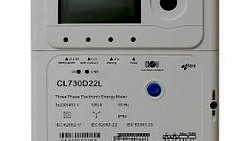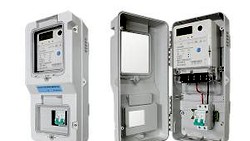Advanced metering infrastructure (AMI) systems have transformed the utility industry by automating meter readings and enabling two-way communication between utilities and customer meters. While AMI technologies have provided numerous operational benefits since their introduction over two decades ago, many experts argue the full potential of these systems has yet to be realized due to traditionally infrequent data collection periods. This article analyses the role of data granularity in maximizing AMI value through improved demand response, outage management, non-technical loss reduction, and customer engagement capabilities.
Most AMI deployments worldwide currently rely on once-a-day or interval-style readings to collect meter data. However, modern cellular and radio frequency (RF) network capabilities now allow for near real-time transmission of meter data. Transitioning to a higher frequency reading strategy, such as hourly or 15-minute intervals, has the potential to provide transformative insights into customer energy usage patterns and grid conditions. Increased data granularity enables more accurate demand forecasting and targeted load shaping through programs like time-of-use rates or incentives for peak reduction. During outages or faults, sub-hourly readings can pinpoint outage locations and customer impacts, speeding restoration. Frequent readings also improve theft detection by exposing meter tampering or bypass events quickly.
A key benefit of higher frequency AMI data is improved demand response program effectiveness. Leveraging sub-daily usage information allows utilities to better understand major drivers of peak demand like air conditioning use or electric vehicle charging. Utilities can design rates and programs tailored to specific end uses and customer segments, rather than broad approximations. This targeted approach strengthens the price signals and incentives that motivate customers to shift or reduce load when grids are most stressed. Recent pilot programs transitioning to hourly AMI readings reported 10-15 % greater peak reduction compared to legacy daily reading strategies, translating to meaningful capacity deferral.
Outage management represents another prime application for granular AMI data. Most utilities currently rely on phone calls from customers to identify the location and extent of outages. This reactive approach leads to delays in isolating fault areas and restoring service. With sub-hourly readings, grids can be continuously monitored for abnormal or zero consumption at individual meters, automatically pinpointing outages as they occur. Field crews are then dispatched directly to trouble areas rather than searching broader regions. Some studies have found outage restoration times shortened by over 30 % when leveraging 15-minute AMI readings rather than traditional SCADA and phone reporting. Faster response improves reliability metrics and customer satisfaction.
Non-technical losses (mostly electricity theft) represent a substantial challenge globally, costing the industry billions annually. The longer a theft event goes undetected, the greater the financial impact. Timely analysis of hourly or sub-hourly AMI data enhances theft detection algorithms by exposing anomalous meter behaviour patterns that daily reads obscure. Pilot programs transitioning to frequent readings have reported 20-40 % reductions in time to detect non-paying, tampered, or bypassed meters. Quick identification limits theft duration and recoupable losses. It also enables targeted enforcement that promotes revenue protection without overburdening law-abiding customers.
Greater data granularity additionally supports evolving customer engagement strategies. Utilities now offer a growing array of mobile apps, web portals, and device integrations that provide energy usage insights to encourage savings. However, these platforms currently rely primarily on monthly or yearly data. Frequent AMI readings allow near real-time or daily consumption breakdowns by major appliance or system type through non-intrusive load monitoring approaches. This level of disaggregation and timeliness strengthens customers' ability to understand usage and take action. For example, a customer would receive daily alerts identifying unusually high air conditioning runtime, leading to behavioural changes and savings.
To realize these full performance benefits, utilities will need to upgrade their AMI communications networks and data management systems where necessary to support ongoing frequent meter reads rather than current daily or interval collection. However, technology costs continue declining at an average of 5-7 % annually according to industry analysts as cellular networks become denser and data storage becomes more efficient. Completed transition programs have reported payback periods of 3–5 years factoring capacity deferral, outage cost avoidance, and revenue protection impacts. Ongoing operational savings then provide a long-term return. With the right strategy and investment, utilities can more fully leverage AMI infrastructure to strengthen grid operations, programs, and the customer experience.
Takeaway
AMI systems were initially designed to streamline utility operations through automated meter data collection. Yet, their full potential is often underutilized, as legacy daily or interval read strategies may not fully capture essential usage insights. By transitioning to more frequent readings using modern communication networks, utilities can obtain detailed, actionable information that significantly enhances demand response, outage management, theft detection, and customer engagement. Utilities that have shifted to hourly or 15-minute data collection with AMI technologies report substantial improvements in these areas.
Investing in these upgrades allows utilities to maximize the return on investment from their AMI solutions, with long-term savings in operational costs and improved grid management capabilities. At CLOU, our smart meter and AMI solutions are designed to support this transition, offering robust, scalable technology tailored to modern utility needs.
If you have any inquiries or need further information about our smart meter- and AMI solutions, please do not hesitate to reach out to us. We are here to assist you and welcome your valuable thoughts and comments.
Until then, keep shining bright like a solar panel on a sunny day!





All comments are moderated before being published. Inappropriate or off-topic comments may not be approved.